|
Early tinsel stars are the rarest
pieces in the field of orders and medals. These delicate
stars, made from gold and silver thread, complete Grand
Cross and Grand Commander sets. Carried at exposed
places on the uniform, these embroidered stars became
worn very easily. This lead to their replacement around
1850 to the sturdier metal stars. Even though the
embroidered stars were less expensive to produce, they
had to be exchanged too often. For this reason their
existents could no longer be justified for further use.
Metal stars were more expensive to produce because of
the high metal value, but they were much sturdier. Also,
they could be awarded again after they were returned to
the Ordenskanzlei after years of carrying. A further
advantage was naturally the possibility of repairing
broken stars.
Fehrmann of Berlin, well known for
his work for the Prussian Ordenskanzlei, manufactured
the gold and silver embroidered tinsel stars. Stars from
his hand might possibly belong to the most beautiful
stars.

Fehrmann did not only operate for
Prussia, which shows the following example. A
embroidered star of the Princely Saxon House Order of
the White Falcon.
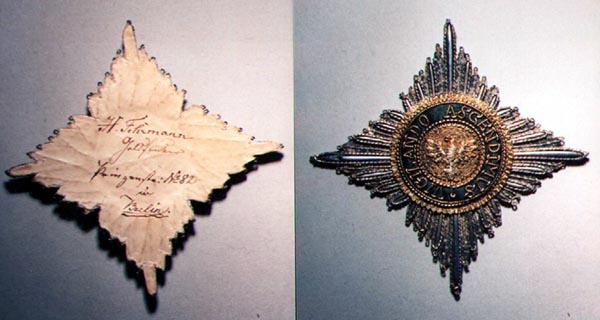
This is characterized by the
exquisite quality of its embroidering.
Tinsel stars appear very rarely on
the collectors market and, especially in good condition,
belong , as already mentioned, to the large rareness of
German and international medals.
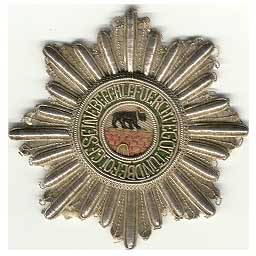 |
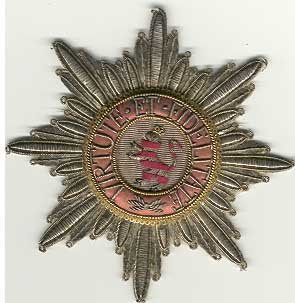 |
|
Grand-Duchy
Anhalt
Grand cross star of the order of
Albrecht the Bear |
Hessen-Kassel
Grand cross star of the order of the
Golden Lion |
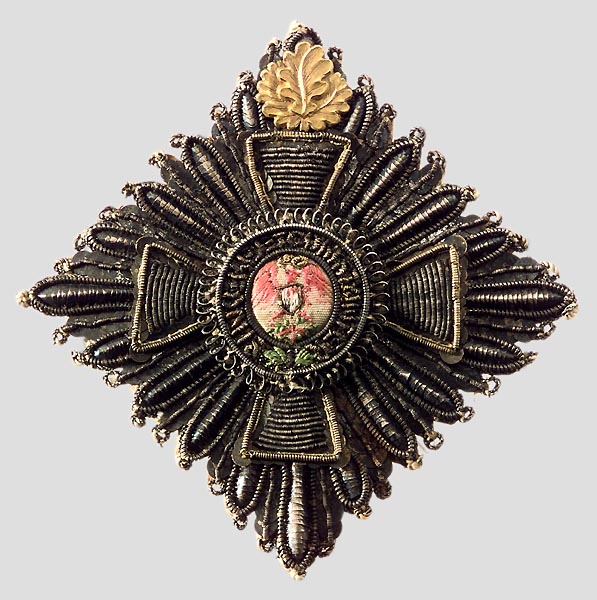 |
 |
|
Kingdom of Prussia
Star 2nd class with oak
leaf |
Kingdom of Bavaria
Grand Commander Star
|
|
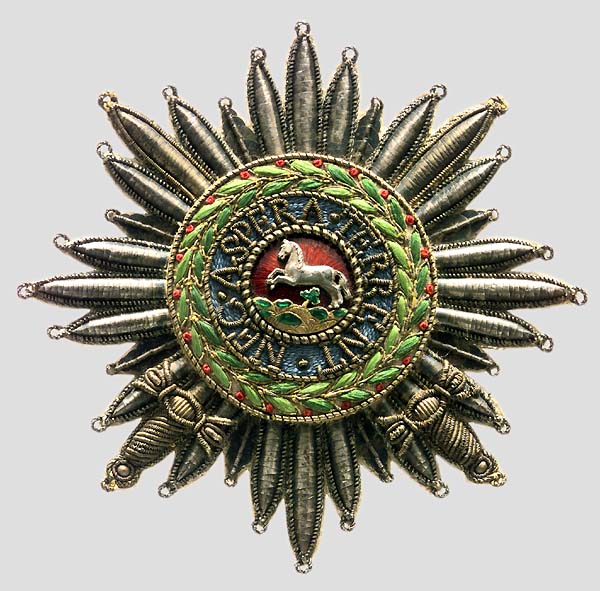 |
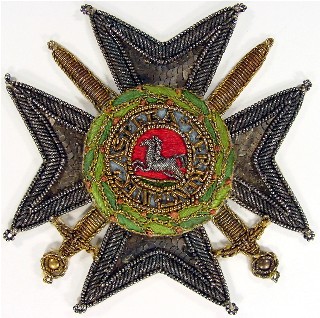 |
|
Kingdom Hanover
Grand Cross Star with
Swords |
Kingdom Hanover
Commander Star with
Swords |
© A. Schulze Ising,
VII/0I
|



